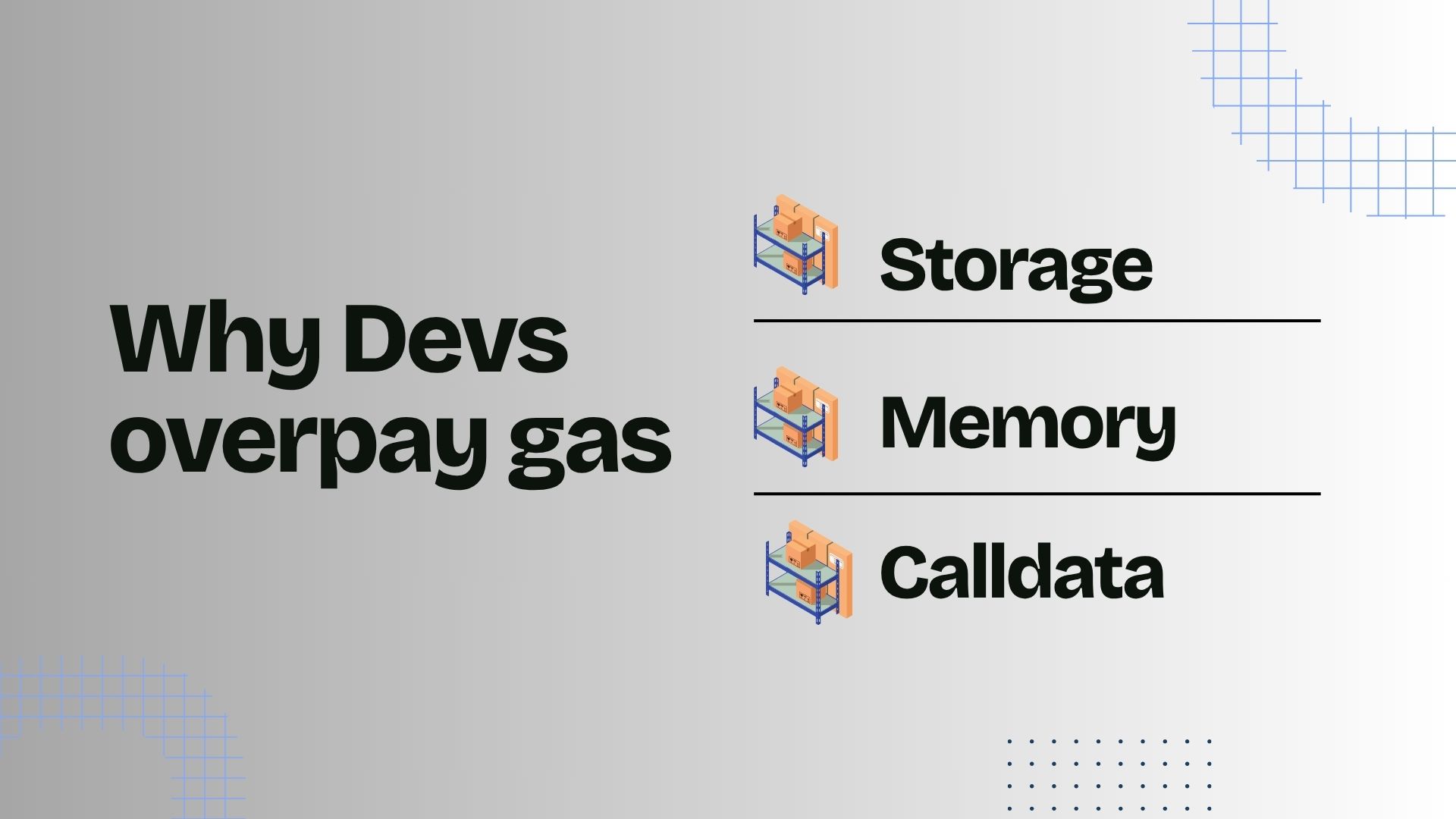
In the world of smart contracts, every byte matters and every gas unit is costly. Yet, most beginner Solidity developers unknowingly write code that wastes gas by misusing one core concept
Solidity’s data locations: storage, memory, and calldata.
Here’s your no-fluff guide to understanding how they work and how to save gas by choosing wisely.
Storage: Durable But Expensive
storage refers to data that persists on the blockchain. It’s what your smart contract keeps between transactions.
But it comes at a cost — literally.
-
Writes to storage cost thousands of gas.
-
Reads are cheaper, but still non-trivial.
uint256 public x; // stored in contract storage
Use storage only for state variables that truly need to live on-chain. Otherwise, you're paying rent for no reason.
Memory: Short-Lived and Mid-Cost
When you need temporary data — like working variables in a function — memory is your go-to.
It’s much cheaper than storage, and is reset every time the function ends.
function calc() public pure returns (uint256) {
uint256 ;
return nums.length;
}
This is perfect for data manipulation that doesn’t need to persist.
Calldata: Temporary and Cheapest
Here’s the pro tip most beginners miss:
calldata is the most gas-efficient location — especially for function inputs.
It’s read-only, lives for one function call, and doesn’t need to be copied like memory.
function sum(uint256[] calldata nums) external pure returns (uint256) {
return nums[0] + nums[1];
}
Want to optimize your contract?✅ Replace memory with calldata for input arrays and structs in external functions.
Real-World Impact
In 2024, a study of 100 top gas-optimized contracts on Ethereum L2s showed:
Projects that used calldata for external input arrays saved up to 35% in gas on average.
That’s a massive edge — especially in DeFi and high-frequency apps.
Bonus: ABI Encoding
Whenever users call your contract, the inputs are encoded in calldata. Solidity decodes them based on the function signature.
Knowing this low-level behavior helps when you start writing custom decoders or using assembly.
Takeaway
If you remember one thing from this:
Use storage only when necessary, memory when needed, and calldata by default for external inputs.
That alone can save you thousands in gas — and elevate your code from "just working" to production-grade.
Want more beginner-friendly Solidity deep dives? Follow along — next up: view vs pure, fallback functions, and function selectors.




评论 (0)